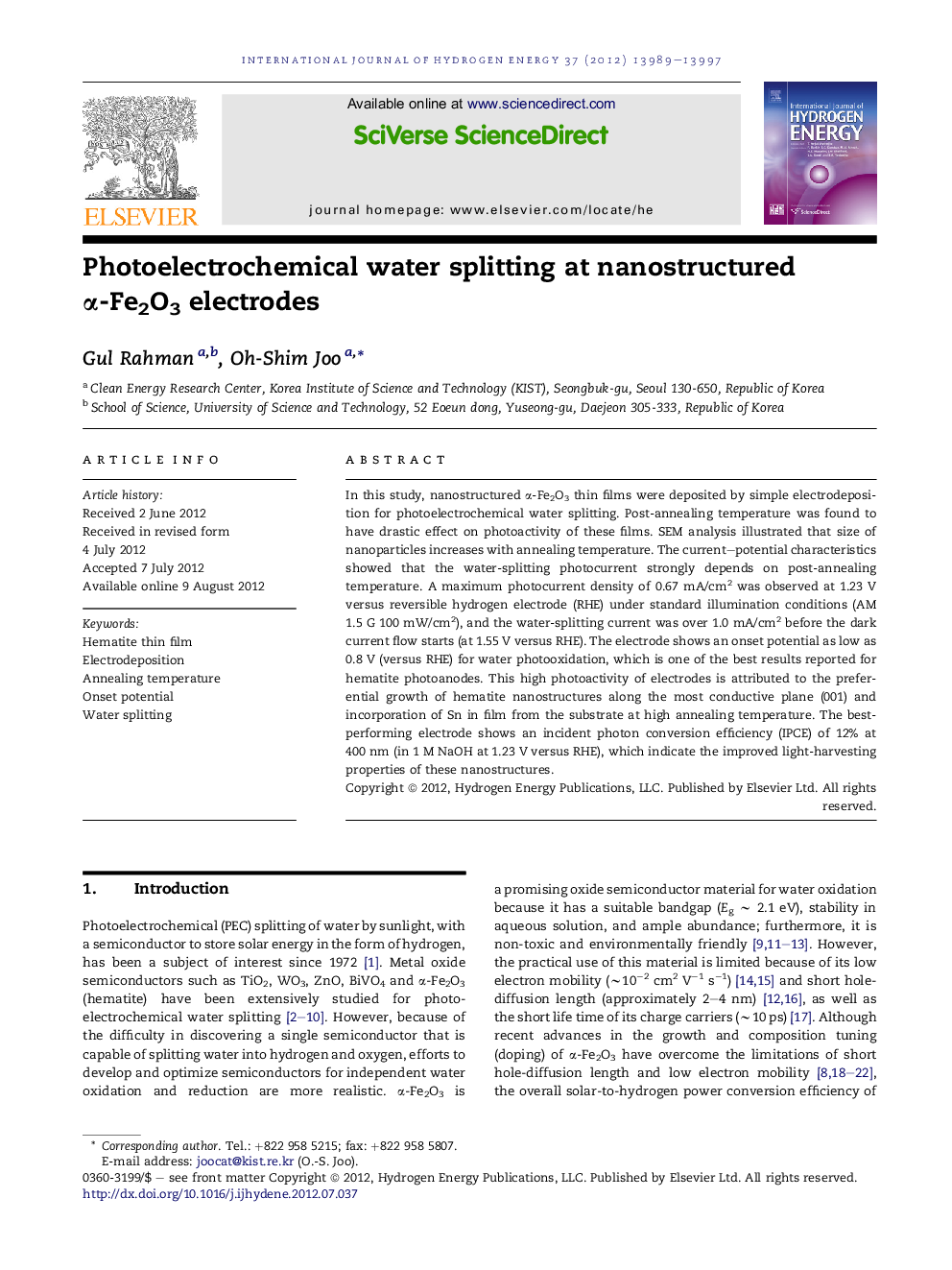| Article ID | Journal | Published Year | Pages | File Type |
|---|---|---|---|---|
| 1274741 | International Journal of Hydrogen Energy | 2012 | 9 Pages |
In this study, nanostructured α-Fe2O3 thin films were deposited by simple electrodeposition for photoelectrochemical water splitting. Post-annealing temperature was found to have drastic effect on photoactivity of these films. SEM analysis illustrated that size of nanoparticles increases with annealing temperature. The current–potential characteristics showed that the water-splitting photocurrent strongly depends on post-annealing temperature. A maximum photocurrent density of 0.67 mA/cm2 was observed at 1.23 V versus reversible hydrogen electrode (RHE) under standard illumination conditions (AM 1.5 G 100 mW/cm2), and the water-splitting current was over 1.0 mA/cm2 before the dark current flow starts (at 1.55 V versus RHE). The electrode shows an onset potential as low as 0.8 V (versus RHE) for water photooxidation, which is one of the best results reported for hematite photoanodes. This high photoactivity of electrodes is attributed to the preferential growth of hematite nanostructures along the most conductive plane (001) and incorporation of Sn in film from the substrate at high annealing temperature. The best-performing electrode shows an incident photon conversion efficiency (IPCE) of 12% at 400 nm (in 1 M NaOH at 1.23 V versus RHE), which indicate the improved light-harvesting properties of these nanostructures.
► Hematite thin films were prepared by simple electrodeposition technique. ► The film showed high water-splitting photocurrent of 0.67 mA/cm−2 at 1.23 V versus RHE. ► The best-performing film can produce hydrogen at low applied potential. ► A high water-splitting performance (IPCE) of 12% was observed at 400 nm.
